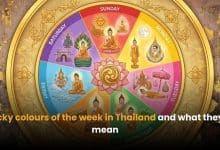The evolution of Buddhism in Thailand
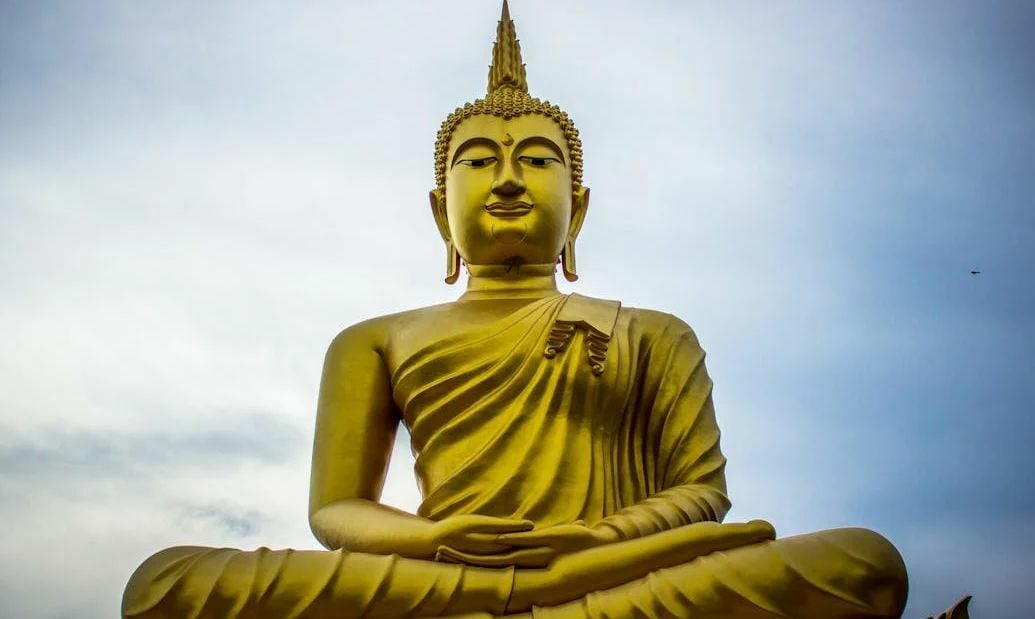
Thailand’s Bhikkhu Sangha follows the Theravada discipline, similar to other Theravada communities worldwide. This has ensured uniformity in practices and beliefs and it has created a unique, rich cultural landscape.
Buddhism has also shaped societal norms and values. Thai rulers often became monks, enhancing the religion’s status. This practice reflects the deep respect and commitment to Buddhism in Thai society. The Department of Religious Affairs helps maintain this legacy, ensuring Buddhism’s ongoing prominence.
Visitors to Thailand can see Buddhism’s influence on daily life. Festivals, temples, and cultural rituals all bear the mark of Buddhist tradition. Even urban landscapes feature prominent Buddhist symbols. Through centuries of dedication and integration, Buddhism remains central to Thailand’s identity and way of life.
How Buddhism began
Sukhothai previously served as a border town of the Cambodian Empire. The Cambodian Empire, at its height, embraced Hinduism. As it waned, it transitioned to Mahayana Buddhism. Sukhothai inherited the ancient Theravada tradition from Burma and Central Thailand and also absorbed the newly emerging Buddhism. This created a unique melting pot of Buddhist traditions.
The King of Sukhothai aimed for a fresh start in religious practices. He invited forest monks trained in Sri Lanka to settle in the region. These monks, residing in what is now southern Thailand, established a monastery in Sukhothai. This move marked the beginning of Thai Buddhism.
By 1257 AD (BE 1800), the Thais established their independent state at Sukhothai. They had struggled for years to secure this autonomy. During their southward expansion, they encountered Burmese Buddhism, which had royal patronage under King Anuruddha. Some scholars suggest that, because Mahayana Buddhism had reached China early in the Christian Era, the Thais had some prior familiarity with Buddhist concepts.
Thus, the rise of Buddhism in Thailand intertwined multiple traditions and cultures. This diverse religious landscape set the stage for Thai Buddhism to evolve uniquely. Buddhism serves as Thailand’s main religion, deeply embedded in its culture. Around 95% of Thais follow Theravada Buddhism. This branch focuses on the Pali Canon’s teachings, believed to be the oldest record of Buddha’s words.
Arrival of Buddhist monks
In the 3rd century BC, Emperor Ashoka sent royal monks to Thailand. They brought the teachings of Buddha, aiming to spread Buddhism beyond India. Initially, Mahayana Buddhism took hold. Eventually, Theravada Buddhism became dominant. Monks from Ceylon (Sri Lanka), Burma, and Cambodia contributed to this transition by sharing their knowledge and practices.
Influence of Buddhist traditions
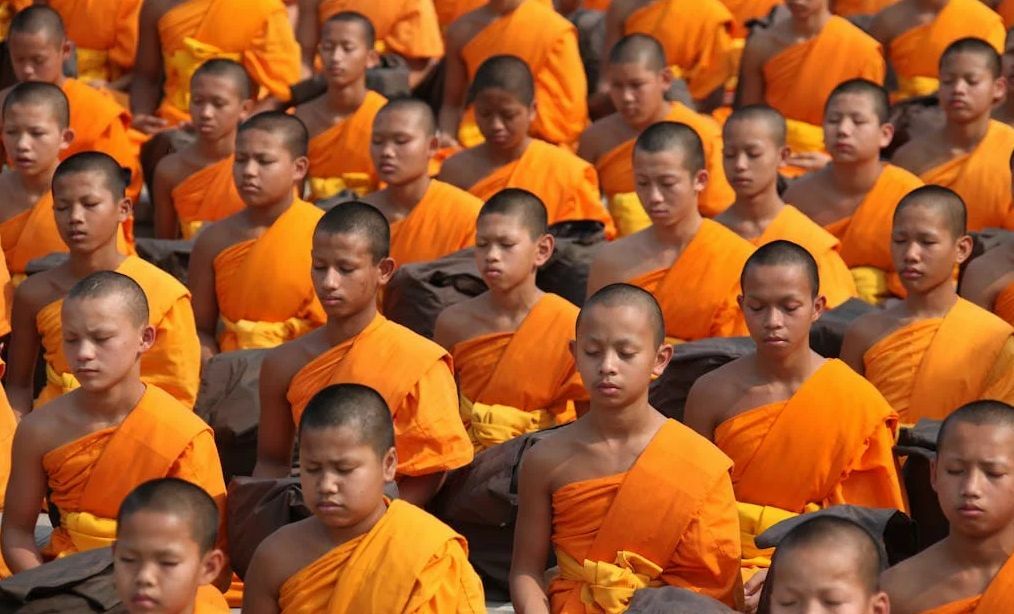
Buddhism has profoundly shaped Thai culture for over a millennium. The rise of Buddhism in Thailand is intricately linked to its socio-political history and cultural evolution.
Theravada or Southern Buddhism
Theravada, or Southern Buddhism, is the predominant form in Thailand. This school, also known as the “Teaching of the Elders,” emphasises the Pali Canon as its scripture. Theravada Buddhism arrived in Thailand around the 7th century, primarily through merchants and monks from India and Sri Lanka. This form stresses individual enlightenment and monastic discipline, which has influenced Thailand’s religious practices, monastic structure, and cultural traditions.
Mahayana or Northern Buddhism
Before Theravada Buddhism took root, Mahayana or Northern Buddhism had an initial influence. Mahayana, introduced through Chinese and Indian monks, centres on the Bodhisattva ideal, which seeks the enlightenment of all beings. Though Mahayana did not become the dominant form, its early presence left an imprint, particularly in artistic expressions and certain localised rituals.
Burma (Pagan) Buddhism
Burma (Pagan) Buddhism also played a role, especially during the Sukhothai Period. The Burmese invasion in 1767 significantly impacted Thai Buddhism. Thai rulers and monks sought to purify and systematise their practices, influenced by Burmese monastic reforms. This interaction helped shape the governance of the Thai Sangha and the establishment of stricter monastic codes.
Ceylon (Lankavamsa) Buddhism
Ceylon (Lankavamsa) Buddhism has had a lasting impact on Thailand. In 1277 AD, Thai King Ram Kamhaeng invited Sinhalese monks to his capital, integrating their practices into Thai Buddhism. Kings like Maha Dharmaraja Lithai reinforced this connection by adopting Ceylonese ordination rites. Many temples and Buddhist images in Thailand reflect this Lankan influence, and the study of Pali thrived, deepening the doctrinal and cultural bonds between the two regions.
Buddhism’s rise in Thailand is a complex tapestry woven from various traditions, historical events, and cultural interactions.
Evolution through different Thai dynasties
The rise of Buddhism in Thailand spans several periods, each contributing uniquely to its development. This growth is marked by significant events and transitions within the Sukhothai, Ayutthaya, and Rattanakosin dynasties.
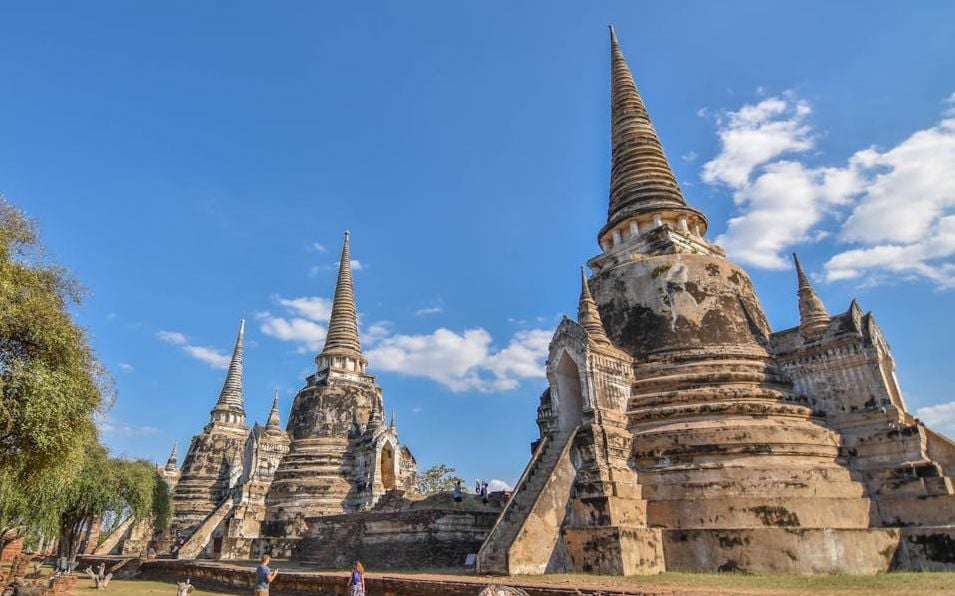
Sukhothai Period
During the Sukhothai period (1238–1438 AD), the kingdom saw the introduction of Theravada Buddhism from Ceylon (Sri Lanka). King Ram Kamhaeng played a crucial role in this by inviting monks from Ceylon to propagate the doctrine. He provided royal support, fostering the spread of Theravada teachings. Evidence of this is found in one of his rock inscriptions dated around 1277 AD. This era marked the initial establishment of Buddhism as the state religion, influencing Thai culture and society profoundly.
Ayutthaya Period
The Ayutthaya period (1350–1767 AD) continued the patronage of Theravada Buddhism. Kings like Maha Dharmaraja Lithai and Borom Trai Lokanath took monastic vows to demonstrate their devotion. They invited Ceylonese patriarchs to oversee important ordination ceremonies. Many temples and monasteries built during this period followed Lankavamsa Buddhism’s style. The destruction of Ayutthaya in 1767 was a cultural disaster, yet the efforts to rejuvenate Buddhist practices persisted, reinforcing the religion’s importance.
Rattanakosin Period
The Rattanakosin period (1782–present) began with King Rama I’s efforts to restore and reorganise the Sangha. The Supreme Patriarch, chosen by the King, led these initiatives. King Mongkut (Rama IV), before ascending the throne, initiated reform movements as a monk. He aimed to purify the monastic order, which he found corrupt. This period saw continued state involvement in Buddhism, solidifying its role in modern Thai identity. The Department of Religious Affairs within the Ministry of Education now manages Buddhist affairs, ensuring continuity and adherence to traditional practices.
Modern-day Buddhism in Thailand
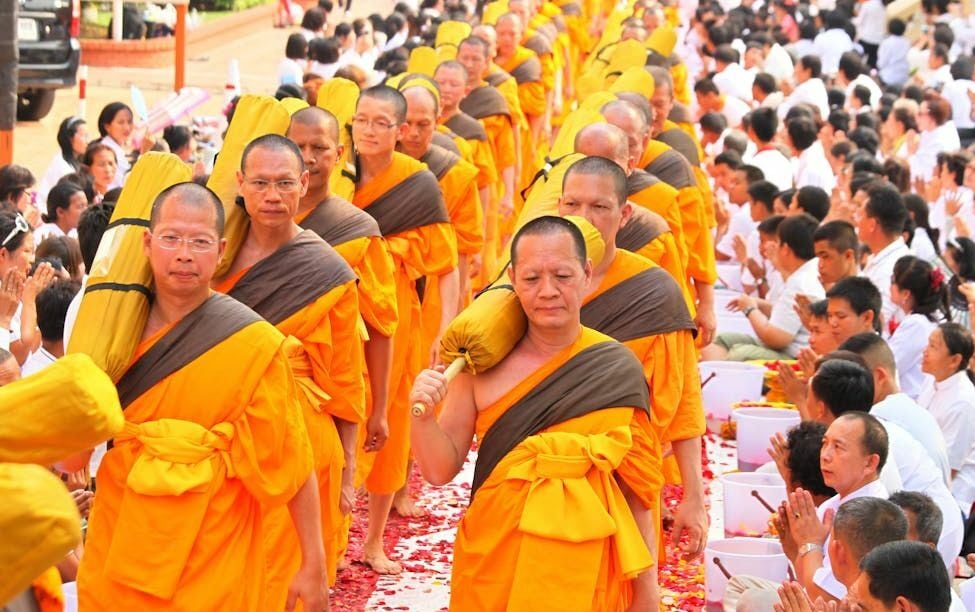
Modern-day Buddhism in Thailand remains deeply ingrained in daily life. The Department of Religious Affairs, part of the Ministry of Education, coordinates with the Sangha, ensuring legal directives and property records are maintained. This collaboration supports monks and monasteries.
The Sangharaja, or Supreme Patriarch, leads the Sangha. The King, in consultation with the Government, chooses this senior monk. The Sangharaja appoints an Ecclesiastical Ministerial Council. This council oversees four boards: Ecclesiastical Administration, Education, Propagation, and Public Works. Each board sustains various aspects of Buddhist activities.
Thai rural families, who are highly religious, contribute significantly to Buddhist monasteries. They donate 5-10% of their annual cash income. These contributions fund temple maintenance, repairs, and the upkeep of the Sangha functionaries.
Temples and monasteries, as State property, play a crucial role. Many individuals participate in meditation retreats and merit-making activities. Public festivals like Makha Bucha and Visakha Bucha celebrate Buddhist values. These events draw large crowds, fostering communal harmony and spiritual growth.
Buddhism influences both urban and rural lifestyles. However, rural areas, being more religious, show a higher rate of engagement in Buddhist practices. Urban dwellers, less inclined to religion, still observe significant events, albeit less frequently.
This structure of modern-day Buddhism in Thailand highlights its enduring influence. From administrative systems to everyday practices, the rise of Buddhism remains a cornerstone of Thai culture.
Challenges and adaptations
Buddhism in Thailand has faced several challenges over the centuries. The destruction of Ayuthaya in the 18th century was a significant blow. It led to the loss of many religious texts and cultural artefacts. This event necessitated extensive efforts to rebuild and reform the monastic order.
King Mongkut, a key figure in the 19th century, initiated reform while he was still a monk. He believed the monastic order was corrupt. His reforms aimed to purify and revitalise Buddhist practices. This movement was part of the broader effort to adapt Buddhism to modern times.
The establishment of the Department of Religious Affairs within the Ministry of Education created a structured approach to managing Buddhist affairs. This department collaborates with the Ecclesiastical Ministerial Council to issue legal directives, maintain records, and manage the properties of the Sangha. Such measures have been crucial for the sustained growth of Buddhism in Thailand.
Maintaining the integrity of Buddhist institutions remains a constant challenge. The Sangharaja, the Supreme Patriarch, plays a crucial role here. Appointed by the King, he ensures that the Sangha adheres to Buddhist principles. The council of Ecclesiastical Ministers, led by the Sangha Nayaka, supports these efforts. It oversees administration, education, propagation, and public works within the Buddhist community.
These adaptations have enabled Buddhism to remain a core part of Thai culture. The rise of Buddhism continues to influence both rural and urban lifestyles in Thailand. The collaboration between governmental departments and the Sangha supports this enduring influence.
The collaborative efforts between various religious bodies ensure the stability and continuity of Buddhism in modern Thai society. Educational initiatives further bolster the understanding and practice of Buddhist principles. Through this rich tapestry of historical and contemporary elements, Buddhism continues to be a cornerstone of Thai identity and values.
Latest Thailand News
Follow The Thaiger on Google News:

